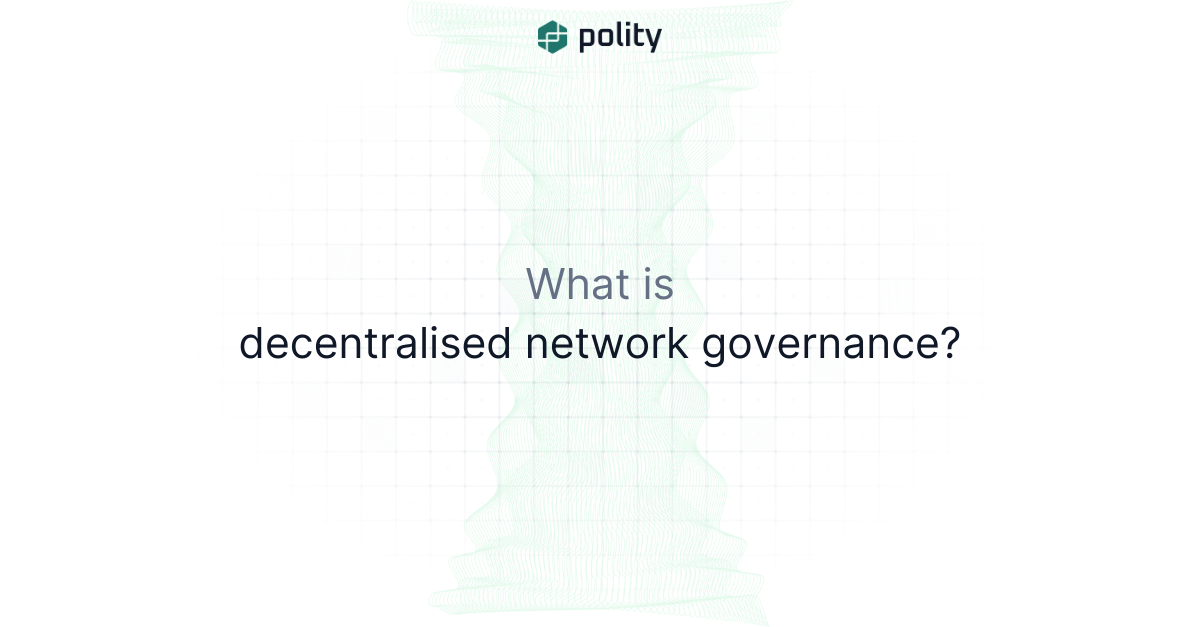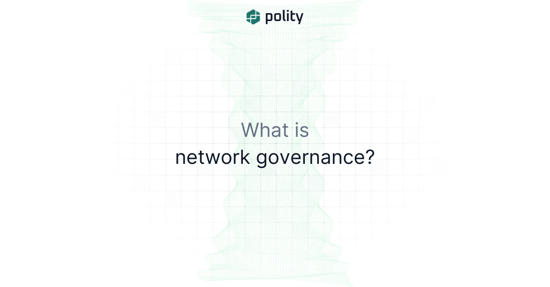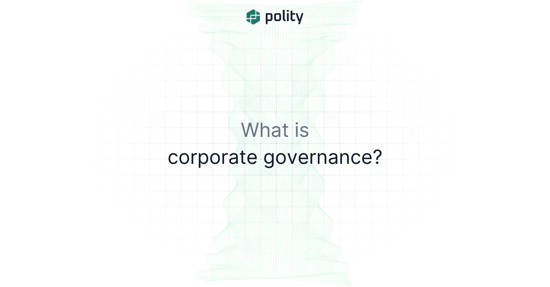Today's fast-paced, customer-centric business environment exposes the limits of traditional company structures and governance.
Technology challenges the effectiveness of traditional hierarchies, and the information revolution empowers stakeholders like never before. According to the previous article, network organisations continue to mature thanks to the internet, yet the power structures of the past still limit them.
Now, a new model is emerging.
Decentralised network governance shifts decision-making power away from a single central authority, promising greater flexibility, innovation, and engagement.
This article will explore decentralised network governance, its potential advantages and challenges, and its increasing relevance to the future of business.
What are the characteristics of decentralised network governance?
As with network governance, horizontal relationships characterise decentralised network member relationships. These members form a web of interlinked, autonomous nodes, collectively contributing to the organisational purpose.
The difference, however, is that where traditional networks typically have a central node with decision-making authority, either by design or by default per this article, decentralised networks distribute this authority.
Instead of a central authority assigning network members roles, relationship dynamics naturally give rise to role assignment. As such, power within decentralised networks does not reside within a role but in the relationships of the actor performing a role. This means that members derive power and authority in a decentralised network from four areas:
- Networking power: the power that actors and organisations have that constitutes the network's core. This power pertains to including and excluding others, thereby controlling the network's makeup.
- Network power: the power that results from the standards required to coordinate interactions. This primarily concerns the imposition of rules within a network.
- Networked power: the power that actors have over one another within a network. This power mimics traditional conceptions of power, but the exertion mode differs per network.
- Network-making power: the power of an actor or organisation to constitute or re-program a network according to its values and specific interests.
As networks of relationships drive power dynamics in decentralised networks, multiple actors can possess each power type. This means members derive power through network membership.
The nature and form of networked actors' connections allow them to define their role through alliance building and networking. They assume governance functions within the network through the personal relationship network.
What are the differences between traditional governance and decentralised network governance?
The relationships between members drive organisations. In traditional organisations, those relationships tend to be vertical hierarchies, rigid reporting structures and a top-down decision-making approach.
This model characterises the institutional hierarchy, which you can read about here, and is often criticised for its lack of agility and hindered communication.
While communication friction is a drawback in modern organisational effectiveness, it is necessary for hierarchies to function.
Therefore, the information revolution and the internet challenge hierarchical governance structures as they reduce the information asymmetry between hierarchical levels.
Network organisations have emerged, characterised by flat hierarchies and bolstered in their efficiency by rapid information sharing. Read more about network organisations here.
The issue, however, is that the same technology that empowers network organisations also limits them. While the free flow of information is necessary for network organisations to function, too much information limits their effectiveness.
A member can only do so much with the amount of information they can process, known as bounded rationality. As such, network members tend to be assigned roles pertaining to specific governance functions, meaning that while networks tend to be flatter hierarchies, decision-making is often still centralised, as explored in this article.
Decentralised network governance seeks to tackle this problem.
What are the benefits of decentralised network governance?
Decentralised network governance offers several advantages over traditional governance.
Traditional organisations often struggle with inefficiency. Owing to the centralised decision-making which characterises these organisations, the effective function requires increasing layers of management.
This creates friction within the organisation, as the greater the distance between the top and the bottom, the slower the information will flow.
Also, as an organisation grows, so will the number of managers, meaning management salaries increase organisational costs significantly.
Organisations with a decentralised network governance framework can significantly reduce these costs by using smart contracts in the place of management. Smart contracts also enable programmable decision-making, further increasing organisational efficiency through automation.
Reduced fixed costs also mean a greater ability to deal with market or macroeconomic activity changes, increasing resilience.
These cost savings and the fluid nature of power in decentralised networks lead to increased antifragility. No single individual is tied to any one governance role, reducing potential single points of failure.
What are the challenges of decentralised network governance?
Though networks as a novel organisational form have successfully organised human endeavour, a consistent and effective function is not guaranteed.
Traditional and decentralised networks must manage challenges in trust, the number of network participants, network goal consensus, and the need for network-level competencies.
The challenge of trust in networks
Trust is vital to the performance and sustainability of networks, with the distribution and reciprocation of trust among members critical to effective function.
Trust could be widely distributed, high density, or focused on a small group of members, low density. Dense trust ties are necessary for shared governance, and the general level of trust between network members must be consistent to be effective.
Decentralised networks tend to be permissionless and anonymous, making it difficult for members to build trust due to a perceived loss of human-centricity. Permissioning and doxxing present a solution to this problem, as they reintroduce the human aspect to decentralised networks, ensuring member cohesiveness and making it easier to build trust.
The challenge of governance complexity in networks
Governance complexity also increases as a network grows due to the exponential increase in potential relationships.
While shared self-governance is desirable for small networks, it becomes inefficient for larger ones, especially when participants are decentralised.
Network governance activities can be centralised around a broker member, acting as an intermediary to manage these challenges and achieve consensus.
The selective application of blockchain and smart contracts presents a solution, as a network could program them to act like the broker member, streamlining the decision-making process.
The challenge of consensus in networks
For effective function, networks must align organisational and member goals.
High consensus on these goals increases participant involvement, commitment, and collaboration. Similar member purposes undermine network function through competing shared interests.
When goal consensus is low, network involvement may be pointless. This means reaching and maintaining consensus is essential for network function and formation. As with network size, networks can leverage intermediary members to broker consensus.
Blockchain, and the consensus mechanisms that drive it, also solve this problem. Decentralised networks can leverage smart contracts to aggregate votes, coded to ensure members reliably reach consensus on important manners.
The challenge of competency in networks
Finally, members participate in networks to achieve goals they could not accomplish independently.
The competencies and structure a network needs to reach these network-level goals depend on the nature of the tasks members tackle and the environment in which a network operates.
Internal tasks requiring significant interdependence among members require network-level coordination skills and task-specific competencies.
This is challenging in a shared governance environment as individual members potentially lack the necessary skills. External tasks, such as buffering the network from new regulations, or bridging roles like raising a funding round, also require network-level competencies.
Centralised actions, like those achievable by an intermediary member, are typically needed to address these demands.
Selective and transparent permissioning solves this problem, ensuring all network members meet the minimum viable competency for membership. This ensures all members have the necessary skills to deal with most issues a decentralised network may face.
Define the future of decentralised network governance with Polity Network.
The future of decentralised network governance is promising.
Blockchain technology presents a novel solution to the challenges common to traditional and decentralised network organisations.
We at Polity Network believe that blockchain and decentralised network organisations will play a significant role in the future of work and organisational design.
That is why we are building Polity Network as a pDAO. This novel organisational structure combines the proven aspects of traditional enterprise with the promise and potential of blockchain technology.
To learn more about Polity Network, subscribe to this publication or visit our website at https://polity.li.
References
1. Castells, Manuel. "Network theory| A network theory of power." International journal of communication 5 (2011): 15.
2. Zwitter, Andrej, and Jilles Hazenberg. "Decentralized network governance: blockchain technology and the future of regulation." Frontiers in Blockchain 3 (2020): 12.
3. Conlisk, John. "Why bounded rationality?." Journal of economic literature 34, no. 2 (1996): 669-700.
4. Provan, Keith G., and Patrick Kenis. "Modes of network governance: Structure, management, and effectiveness." Journal of public administration research and theory 18, no. 2 (2008): 229-252.





.png?width=550&height=395&name=What%20is%20governance%20(3).png)